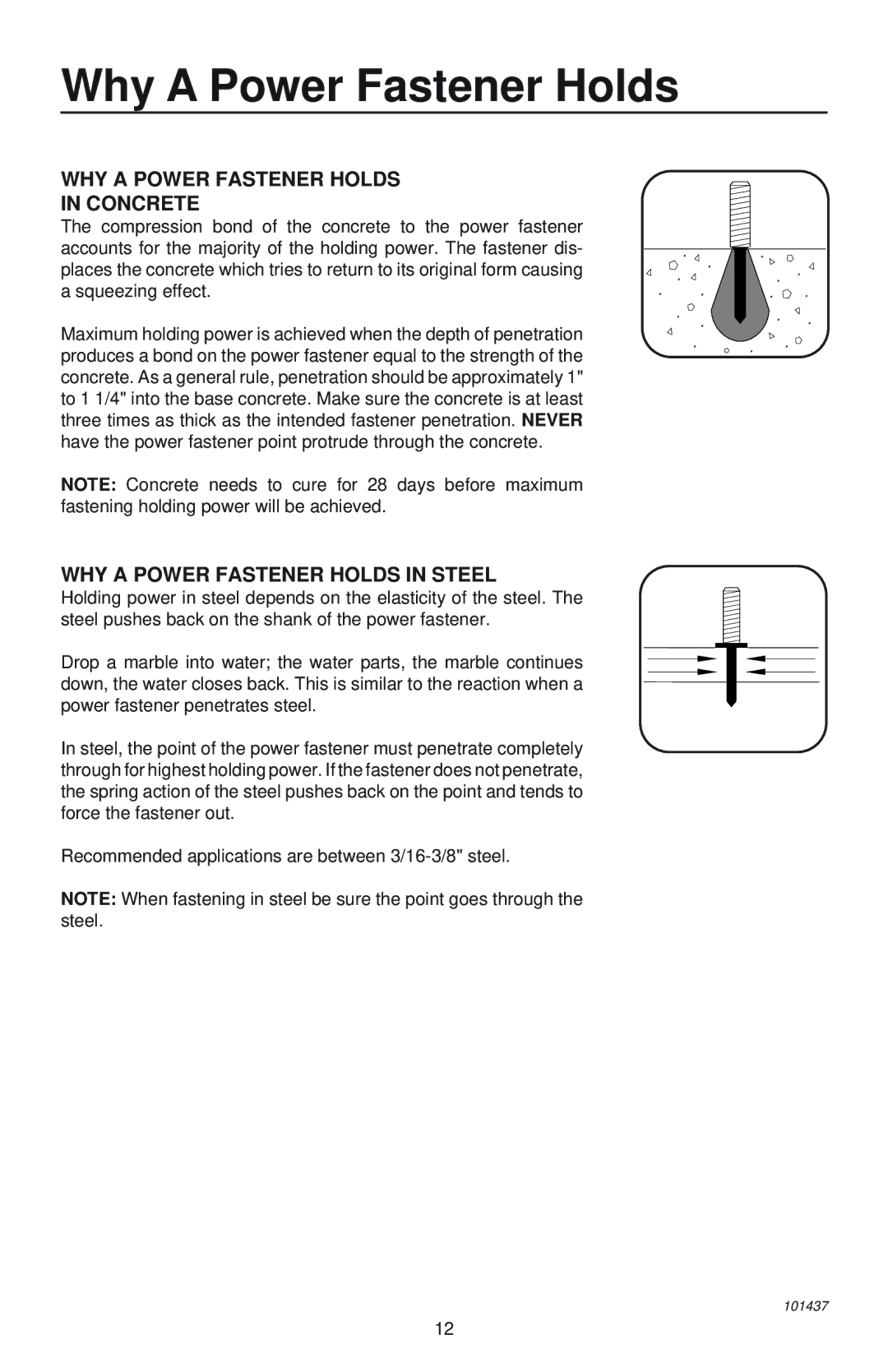
Why A Power Fastener Holds
WHY A POWER FASTENER HOLDS
IN CONCRETE
The compression bond of the concrete to the power fastener accounts for the majority of the holding power. The fastener dis- places the concrete which tries to return to its original form causing a squeezing effect.
Maximum holding power is achieved when the depth of penetration produces a bond on the power fastener equal to the strength of the concrete. As a general rule, penetration should be approximately 1" to 1 1/4" into the base concrete. Make sure the concrete is at least three times as thick as the intended fastener penetration. NEVER have the power fastener point protrude through the concrete.
NOTE: Concrete needs to cure for 28 days before maximum fastening holding power will be achieved.
WHY A POWER FASTENER HOLDS IN STEEL
Holding power in steel depends on the elasticity of the steel. The steel pushes back on the shank of the power fastener.
Drop a marble into water; the water parts, the marble continues down, the water closes back. This is similar to the reaction when a
power fastener penetrates steel. | |
|
In steel, the point of the power fastener must penetrate completely through for highest holding power. If the fastener does not penetrate, the spring action of the steel pushes back on the point and tends to force the fastener out.
Recommended applications are between
NOTE: When fastening in steel be sure the point goes through the steel.
101437
12
